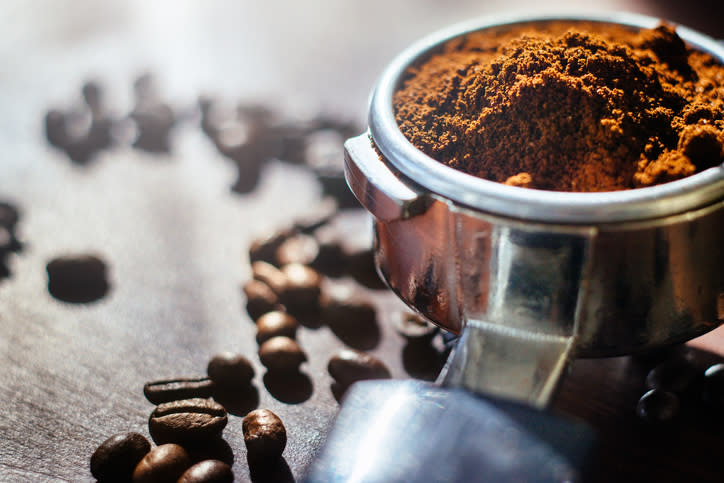Here’s whether light or dark roast coffee has more caffeine
Coffee is an integral part of human interactions. So many of us rely on it to function day in and day out. Everyone has their own coffee preferences, their own likes and dislikes. Often, those preferences are correlated to our beliefs about and desires for caffeine. There are those who claim that darker roasts have more caffeine because they have bolder and heavier flavors. Others argue that lighter roasted coffee is more caffeinated because the beans are roasted less, losing less caffeine.
So which is it? Both sides are correct, but not for those reasons. It depends on how the beans are measured, by volume or by weight. Although coffee beans expand during the roasting process, they end up losing weight due to the evaporation of water and other chemicals. Their weight consists of about eight to 12 percent water content, and they lose around 90 percent of that during this process.
Since coffee beans are roasted longer for darker roasts, the beans end up losing more weight than their counterparts. When you measure coffee by weight, the dark roasts will be the ones providing more caffeine. They have less mass and need more volume to obtain the same weight as a light roast.
Related article: Now you can buy the world’s most caffeinated coffee
If the coffee is measured by volume (or scoops), lighter roasts will be the way to go for more caffeine. Light roasts are denser because they’re less exposed to the heat, and the longer coffee beans are roasted, the less dense they become. By brewing coffee with scoops, you’ll have more coffee in lighter roasts because of their density, which will provide you with more caffeine.
Kicking Horse Coffee explains this concept in their own experiment where they found an estimated 90 bean difference between a pound of light and dark roast coffee of their own blends. Coffee tends to be sold to consumers by weight (whether whole beans or ground). Since most coffee drinkers measure it by volume at home, it may be best to purchase a lighter roast if the amount of caffeine is a factor in your coffee preferences.
Related article: Yes, you can (and should) salt your coffee
Most specialty coffee shops brew their coffee by weight rather than by volume. The SCAA (Specialty Coffee Association of America) has created a standard brewing ratio of weight to water. Next time you’re out at a coffee shop, a darker roast would be a better choice instead of that light breakfast blend that helps wake you up in the morning.
But the roast isn’t the factor you should be focusing for maximum caffeine consumption. The actual difference of caffeine between a light and dark roast coffee (assuming all other variables are the same) is minimal. There is no need to obsess over light versus dark and create life-altering notions on roast choices depending on whether you’re brewing at home or out and about.
Caffeine is one of the most stable chemicals in the roasting process. What you should pay attention to is the plant species of the coffee beans, if you’re fixed on maximizing your caffeine intake.
Related article: The Australian coffee drinks that any espresso lover should know
“The effect of coffee roasting on caffeine content is so negligible as to be immeasurable except under tightly controlled laboratory conditions,” says Jerry Baldwin, the co-founder of the Starbucks in Seattle. He notes in his article in The Atlantic, “The real issue is the caffeine content of the cultivar, i.e. the species (Arabica or Robusta).” Robusta beans contain more caffeine than the standard Arabic bean, but generally isn’t preferred because of its harsher taste. It ends up that the idea of light roasts having more caffeine than dark roasts, and vice versa, is only a myth.
This article originally appeared in Extra Crispy.



